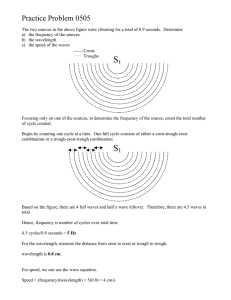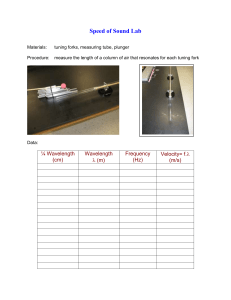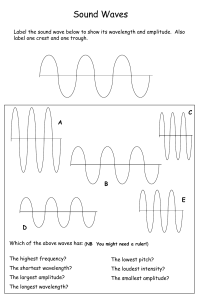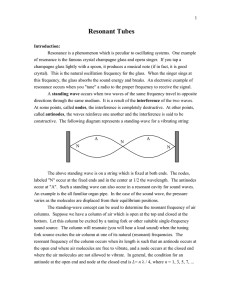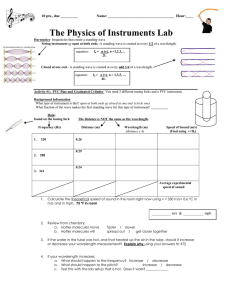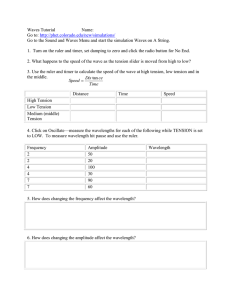Speed of Sound - Science Overdrive
advertisement
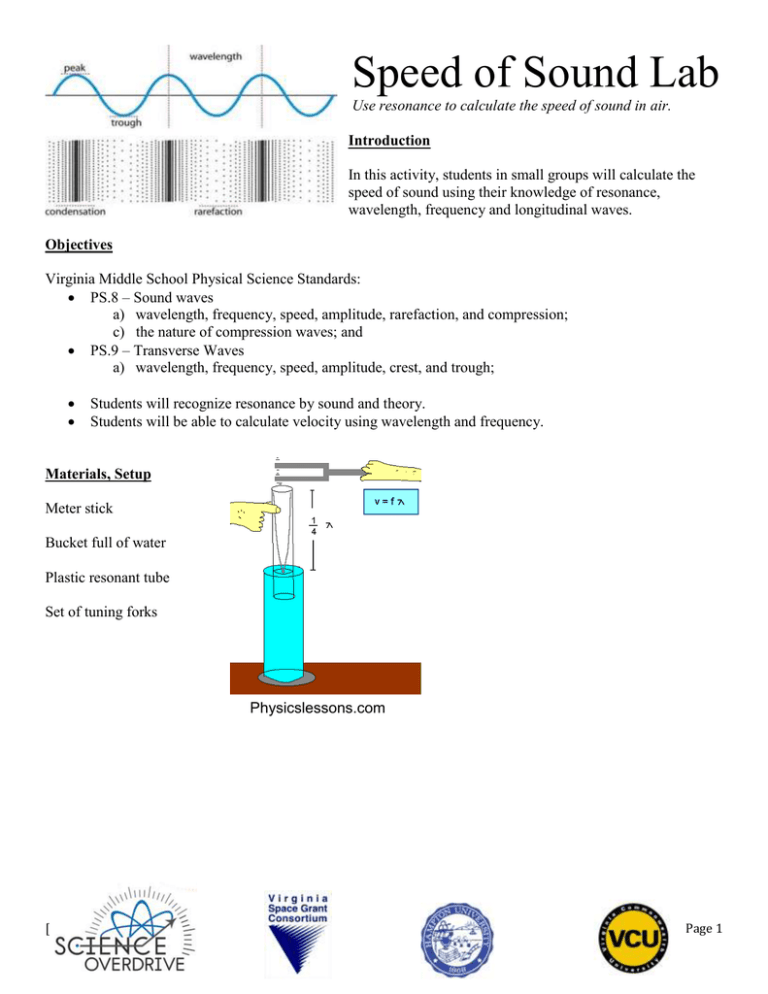
Speed of Sound Lab Use resonance to calculate the speed of sound in air. Introduction In this activity, students in small groups will calculate the speed of sound using their knowledge of resonance, wavelength, frequency and longitudinal waves. Objectives Virginia Middle School Physical Science Standards: PS.8 – Sound waves a) wavelength, frequency, speed, amplitude, rarefaction, and compression; c) the nature of compression waves; and PS.9 – Transverse Waves a) wavelength, frequency, speed, amplitude, crest, and trough; Students will recognize resonance by sound and theory. Students will be able to calculate velocity using wavelength and frequency. Materials, Setup Meter stick Bucket full of water Plastic resonant tube Set of tuning forks Physicslessons.com [Type text] Page 1 Procedure, Data, Calculations and Results 1. Determine the wavelength and the wave speed of sound for different resonant frequencies and lengths. Tuning Fork Frequency Length of pipe above the water when the sound is loudest. Wavelength Speed of Wave (multiply length x 4) v= λ*f 2. Average the calculated speeds and compare to the known value of 340 m/s. [Type text] Page 2
